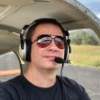reasonable M20J speeds
-
Members Online
- Jakes Simmons
- laytonl
- Joshua Blackh4t
- BillyT0020
- midlifeflyer
- GeeBee
- Denis Mexted
- 1980Mooney
- Planegary
- 201er
- Scott Ashton
- Chris Higgins
- Barneyw
- MikeOH
- FADEC
- LANCECASPER
- Flyler
- nickowen5
- Andy95W
- hammdo
- ltdoyle
- McMooney
- lithium366
- Pmaxwell
- Curryljackson
- MattD89
- 201Mooniac
- Bartman
- EricJ
- RescueMunchkin
- Jason 1996 MSE
- TNIndy
- Sabremech
- PT20J


Recommended Posts
Join the conversation
You can post now and register later. If you have an account, sign in now to post with your account.